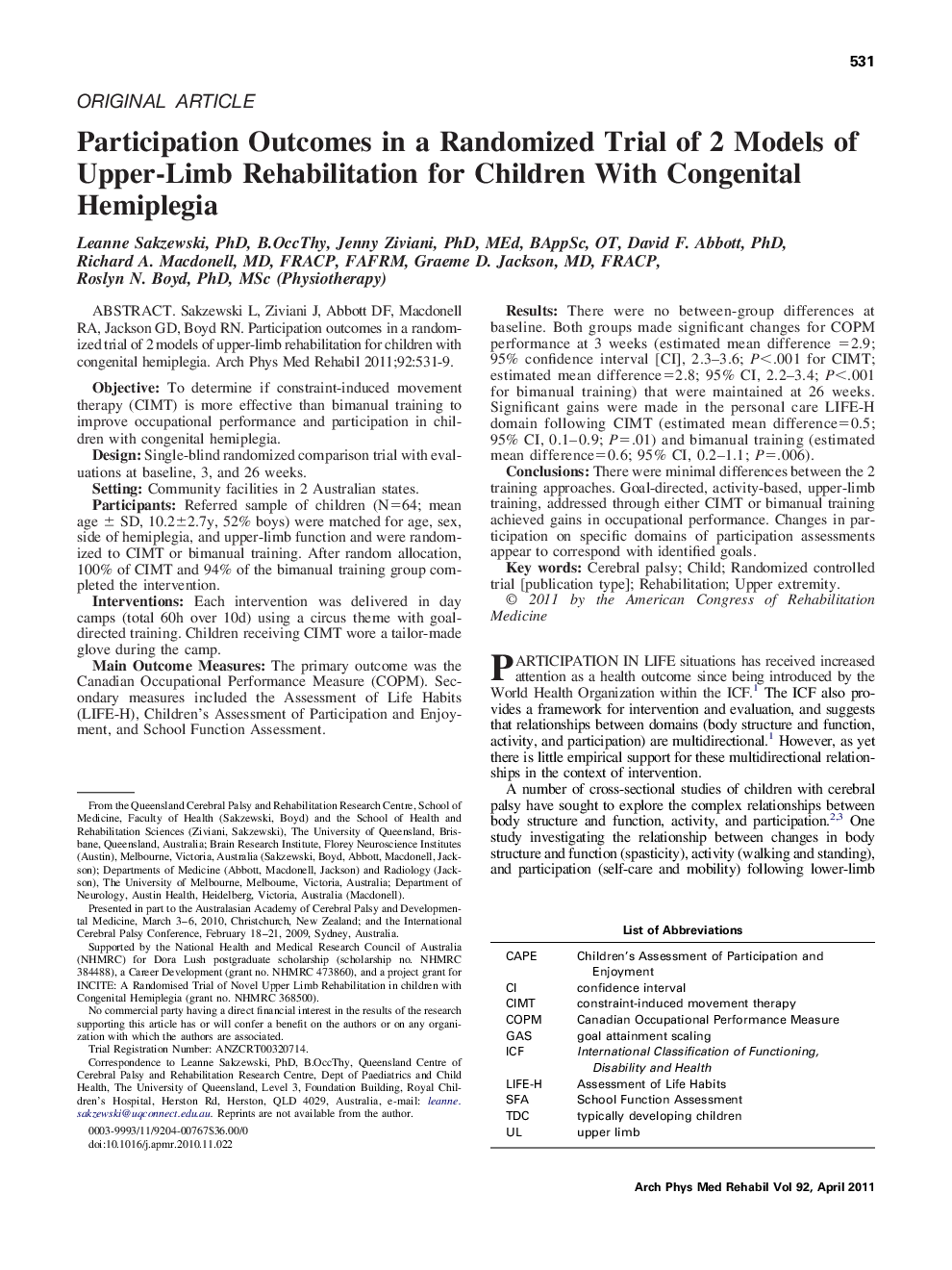| کد مقاله | کد نشریه | سال انتشار | مقاله انگلیسی | نسخه تمام متن |
|---|---|---|---|---|
| 3451074 | 1595741 | 2011 | 9 صفحه PDF | دانلود رایگان |

Sakzewski L, Ziviani J, Abbott DF, Macdonell RA, Jackson GD, Boyd RN. Participation outcomes in a randomized trial of 2 models of upper-limb rehabilitation for children with congenital hemiplegia.ObjectiveTo determine if constraint-induced movement therapy (CIMT) is more effective than bimanual training to improve occupational performance and participation in children with congenital hemiplegia.DesignSingle-blind randomized comparison trial with evaluations at baseline, 3, and 26 weeks.SettingCommunity facilities in 2 Australian states.ParticipantsReferred sample of children (N=64; mean age ± SD, 10.2±2.7y, 52% boys) were matched for age, sex, side of hemiplegia, and upper-limb function and were randomized to CIMT or bimanual training. After random allocation, 100% of CIMT and 94% of the bimanual training group completed the intervention.InterventionsEach intervention was delivered in day camps (total 60h over 10d) using a circus theme with goal-directed training. Children receiving CIMT wore a tailor-made glove during the camp.Main Outcome MeasuresThe primary outcome was the Canadian Occupational Performance Measure (COPM). Secondary measures included the Assessment of Life Habits (LIFE-H), Children's Assessment of Participation and Enjoyment, and School Function Assessment.ResultsThere were no between-group differences at baseline. Both groups made significant changes for COPM performance at 3 weeks (estimated mean difference =2.9; 95% confidence interval [CI], 2.3–3.6; P<.001 for CIMT; estimated mean difference=2.8; 95% CI, 2.2–3.4; P<.001 for bimanual training) that were maintained at 26 weeks. Significant gains were made in the personal care LIFE-H domain following CIMT (estimated mean difference=0.5; 95% CI, 0.1–0.9; P=.01) and bimanual training (estimated mean difference=0.6; 95% CI, 0.2–1.1; P=.006).ConclusionsThere were minimal differences between the 2 training approaches. Goal-directed, activity-based, upper-limb training, addressed through either CIMT or bimanual training achieved gains in occupational performance. Changes in participation on specific domains of participation assessments appear to correspond with identified goals.
Journal: Archives of Physical Medicine and Rehabilitation - Volume 92, Issue 4, April 2011, Pages 531–539